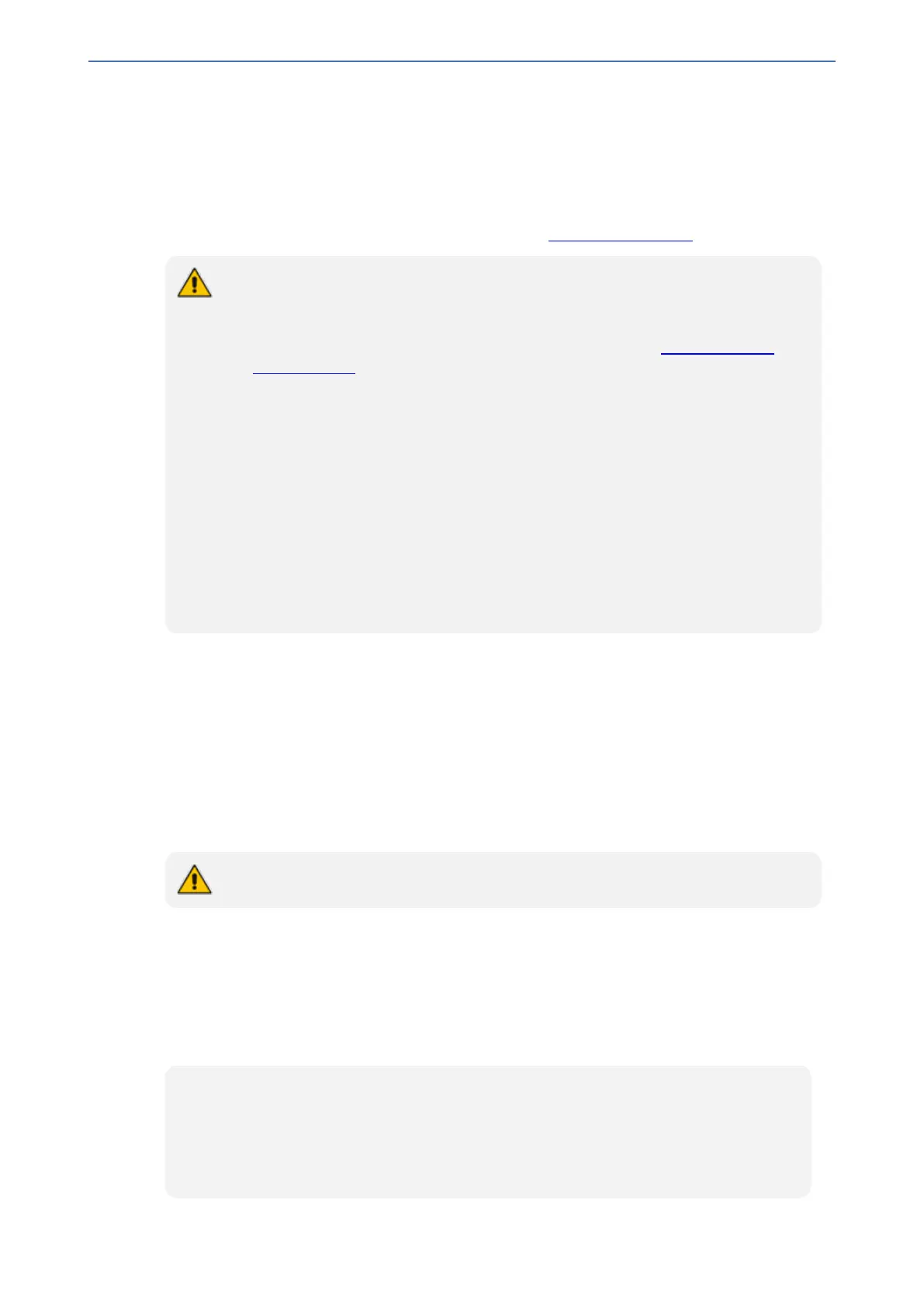CHAPTER27 Configuring DTMF and Dialing
Mediant 1000 Gateway & E-SBC | User's Manual
In the example, the rule "00[1-7]xxx" denotes dialed numbers that begin with 00, and then any digit
from 1 through 7, followed by three digits (of any number). Once the device receives these digits, it
does not wait for additional digits, but starts sending the collected digits (dialed number)
immediately.
(For Digital Interfaces) Digit map pattern rules are used for Tel-to-IP ISDN overlap dialing (by
setting the ISDNRxOverlap parameter to 1) to reduce the dialing period (for digital interface). For
more information on digit maps for ISDN overlapping, see ISDN Overlap Dialing.
● If you want the device to accept/dial any number, ensure that the digit map
contains the rule "xx.T"; otherwise, dialed numbers not defined in the digit map are
rejected.
● If you are using an external Dial Plan file for dialing plans (see Dialing Plans for
Digit Collection), the device first attempts to locate a matching digit pattern in the
Dial Plan file, and if not found it searches for a matching digit pattern in the Digit
Map (configured by the DigitMapping parameter).
● It may be useful to configure both Dial Plan file and Digit Maps. For example, the
Digit Map can be used for complex digit patterns (which are not supported by the
Dial Plan) and the Dial Plan can be used for long lists of relatively simple digit
patterns. In addition, as timeout between digits is not supported by the Dial Plan,
the Digit Map can be used to define digit patterns (MaxDigits parameter) that are
shorter than those defined in the Dial Plan, or left at default. For example, “xx.T”
Digit Map instructs the device to use the Dial Plan and if no matching digit pattern,
it waits for two more digits and then after a timeout (TimeBetweenDigits
parameter), it sends the collected digits. Therefore, this ensures that calls are not
rejected as a result of their digit pattern not been completed in the Dial Plan.
Dial Plan Rules
You can configure dialing plans by using Dial Plan rules or loading a Dial Plan file. For more
information, see Configuring Dial Plans on page491.
Interworking Keypad DTMFs for SIP-to-ISDN Calls
The device can interwork DTMF tones received from the IP to the PSTN, using the ISDN Keypad
Facility information element (IE) in Q.931 INFORMATION messages.
The feature is applicable only to the Euro ISDN variant (User side).
If the device receives from the IP side an INVITE message whose called party number (To header)
contains the asterisk (*) or pound (#) character, or a SIP NOTIFY or SIP INFO message that
contains these characters (e.g., 123#456), the device sends the character and the digits positioned
to its right, as Keypad IE in the INFORMATION message. The device sends only the digits
positioned before the character to the PSTN (in SETUP message) as the called party number. For
example, if the device receives the below INVITE, it sends "123" to the PSTN as the called party
number and #456 as Keypad IE in the INFORMATION message:
INVITE sip:%7B54443994-BDFF-413C-AE4F-
D039B0FFB134%7D@192.168.100.214:5064;transport=tcp;rinstance=9f25c4452eff4acb
SIP/2.0
To: sip:123#456@192.168.100.214;user=phone;x-type=unknown;x-plan=unknown;x-
pres=allowed
- 644 -

